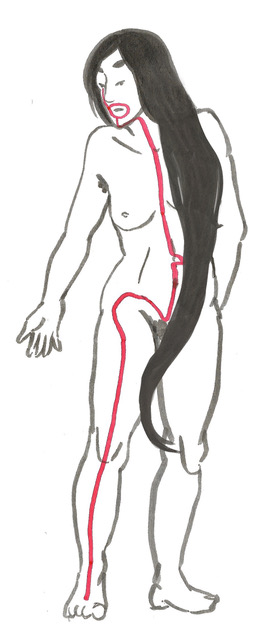Body Time
© Alexandra Ciorciaro 2019
Dr. Daniela Tan
The Body Time project approaches the physical human body as a place in time and aims to link the various research fields of the TIMEJ project.
The overarching aim of this sub-project is to showcase the understanding of physical time, exemplified in the knowledge and interpretation of menstruation in medieval Japan, analyzing medical, religious and literary source texts. Recurrency and rhythm of the female cycle reflect cosmological patterns in the medieval conceptualization of the body.
The concept of the body in medieval Japan is shaped in the intersection of medical and religious worldviews, as physical processes are seen in correspondence with cosmological patterns. In order to understand the knowledge and interpretation of menstruation, Body Time investigates medical source texts representing the state of the art of medical expertise in medieval Japan. The two major works were the Man'anpō and its more vernacular version Ton'ishō, both compiled by Kajiwara Shōzen in the 14th century. Other than the 10th century Ishinpō by Tanba Yasuyori, which remained a source of medical knowledge during later centuries, the new compilations contained separate and elaborate chapters on menstruation and the maintenance of the healthy flow of blood and ki (essence) within the female body.
The medical sources serve to understand the medieval knowledge of and view on the female cycle and show a somewhat positive association with regularity and flow. On the other hand, religious texts such as the blood sutra Ketsubonkyō and the Kongōmyō-saishōō-kyō give insight into the negative and dangerous associations with menstruation such as visions of taboo and kegare (impurity). However, folkloristic research proofs that the pre-Buddhist view of fertility differs from this perception.
This ambivalent perception of the female cycle and women persisted through the medieval age in Japan. How did women arrange their schedules of everyday duties with the social restrictions to which menstruation tied them?
To understand the perception, symbolisation and also implications of the period on the social time regime, I further rely on literary texts by women in medieval Japan from court diaries and poems to letters by nuns and members of the warrior aristocracy, such as Hōjō Masako.
The research field Body Time offers insight into the intersection of the three fields of medicine, religion, and literature. It serves for a deeper understanding of the medieval concept of the body and its relation to time and space.



